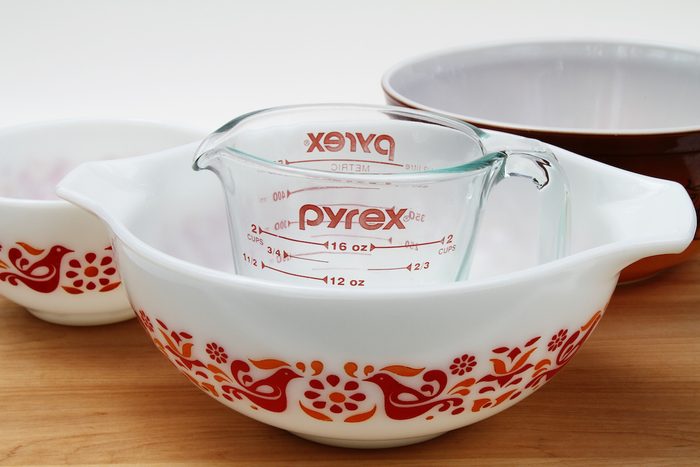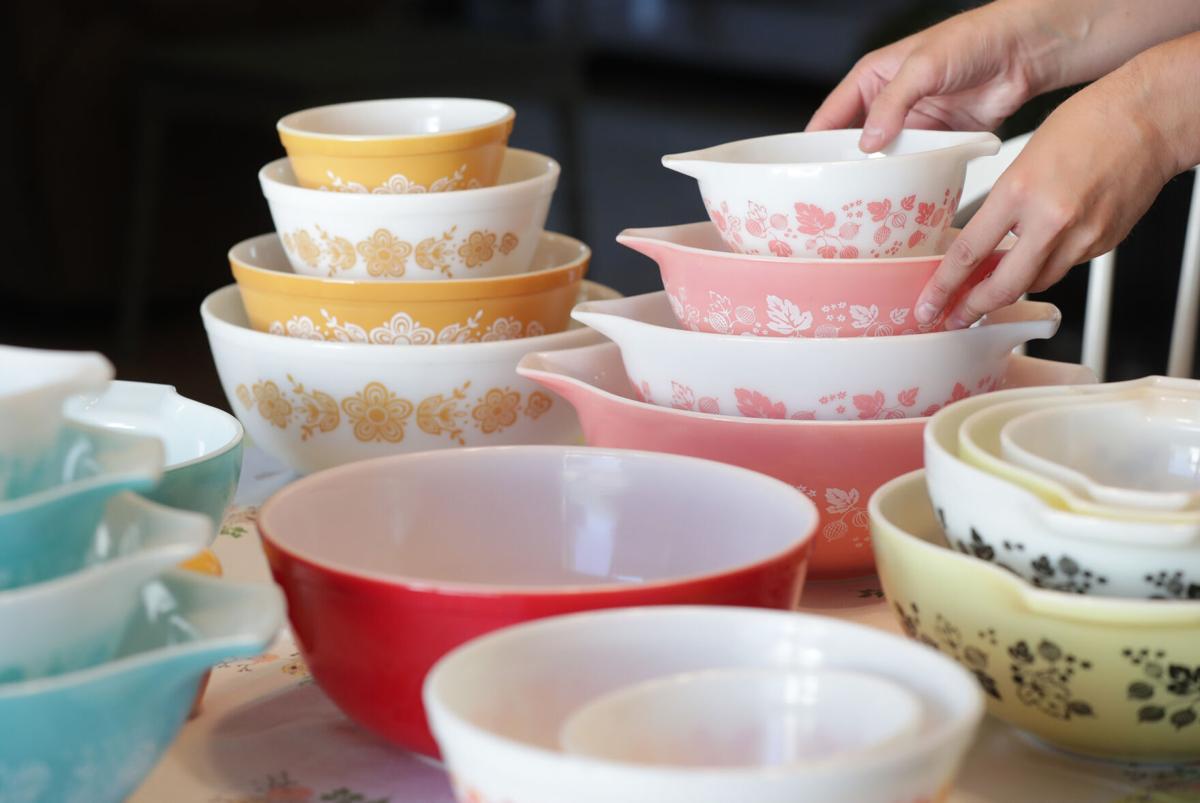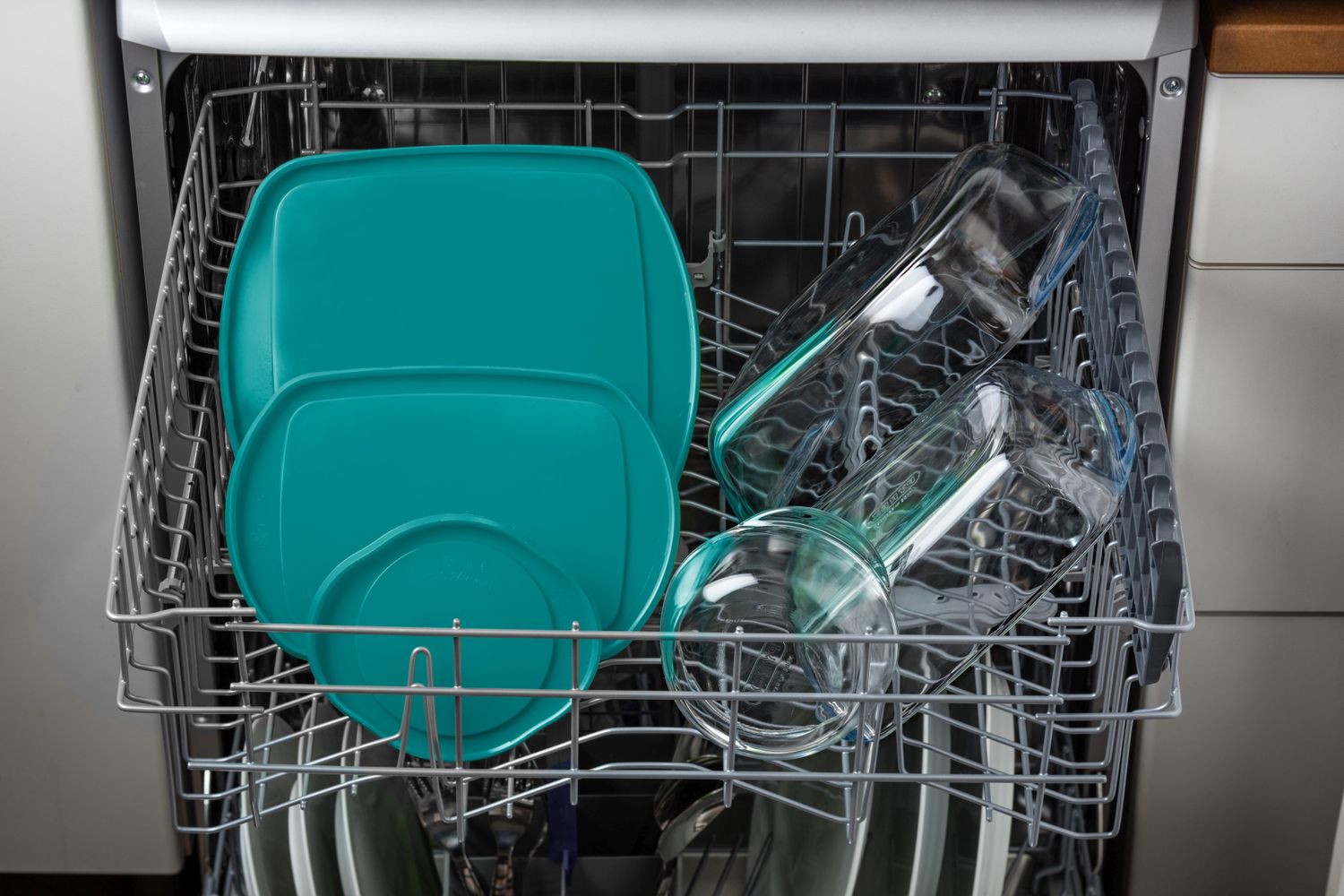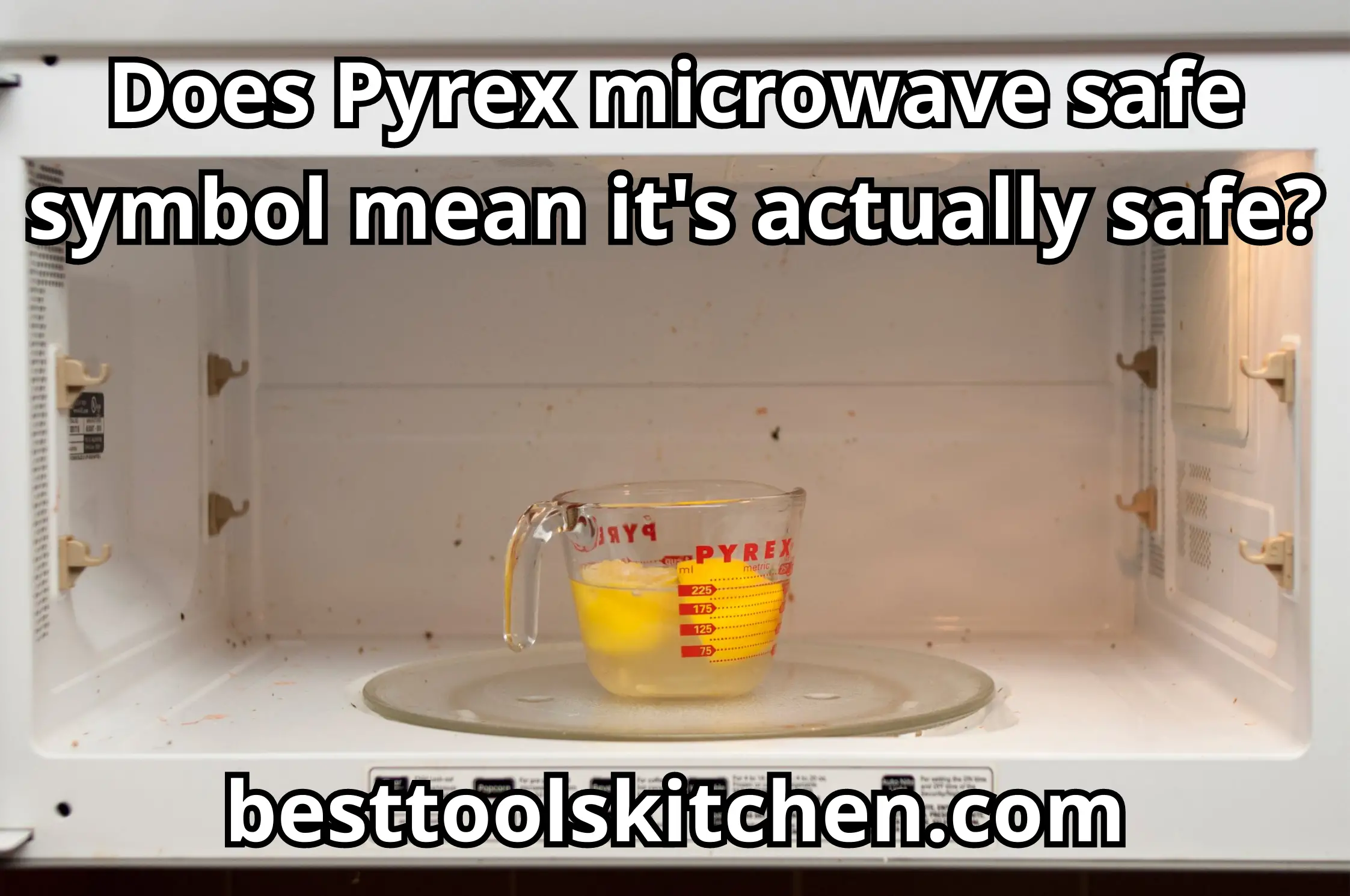Pyrex has cemented its position as a reliable company in the kitchenware industry, known for its high-quality glass products. With a legacy spanning over a century, Pyrex continues to be at the forefront of innovation, offering a wide range of kitchen essentials that meet the demands of modern cooking.
In this article, we are going to explore the importance of microwaving Pyrex safely and shine a spotlight on Pyrex as a leading brand that prioritizes both functionality and safety in its microwave-friendly products.
So, let’s find the answer to our question – Does Pyrex microwave safe symbol mean it’s safe?
Understanding Pyrex

Pyrex is microwave-safe and gained popularity for its sturdy products that can withstand heat, which quickly became a staple in households across the globe. Over the years, Pyrex has continued to innovate and expand its product line, offering a broad spectrum of kitchen essentials, which includes microwave-safe cookware.
Material that makes Pyrex glass microwave-safe
You can easily microwave Pyrex cookware that is mostly consisting of borosilicate glass, a special variety of glass that contains boron trioxide.
This composition gives Pyrex its distinctive qualities and sets it apart from conventional glassware. Borosilicate glass is recognized for its great tolerance to thermal shock, meaning it is resistant to break, even with sudden temperature fluctuations. And it makes Pyrex glass microwave safe.
Properties that allow us to microwave Pyrex
One of the essentials of Pyrex is its ability to endure high temperatures, making it well-suited for a microwave oven. When inserted into a microwave oven, Pyrex efficiently absorbs microwave radiation, allowing the food to heat evenly.
Additionally, Pyrex’s thermal shock resistance ensures that it is resilient to abrupt fluctuations in temperature when transitioning between the microwave and other environments, such as the refrigerator or oven.
Moreover, Pyrex’s non-porous surface prevents the absorption of odors, flavors, and stains from foods cooked or reheated in the microwave. This makes Pyrex a fantastic option for flexible microwave cuisine, as it ensures the purity of flavors and simplifies the cleaning process.
By utilizing borosilicate material in their cookware, Pyrex delivers a trustworthy and safe solution for microwave cooking. Its products’ material composition and specific properties provide users with peace of mind, knowing that their cookware can withstand the demands of microwave heat and usage.
Unique qualities that make Pyrex microwave-safe

Is Pyrex microwave safe? Pyrex is renowned for its outstanding characteristics, making it safe to microwave Pyrex products.
Heat-resistant properties of Pyrex glass
Pyrex glass is recognized for its exceptional heat resistance. The borosilicate composition of Pyrex glass allows it to resist extreme heat without compromising its structural integrity.
This means that Pyrex glass can handle the intense heat generated in microwaves without melting, warping, or releasing harmful chemicals into the food.
Ability to withstand thermal shock
Thermal shock occurs when the temperature changes quickly, which may result in glassware cracking or shattering. However, Pyrex’s borosilicate material is specifically engineered to resist heat shock.
When transitioning from the microwave to other environments, such as a cooler countertop or refrigerator, Pyrex maintains its structural stability. This quality ensures that Pyrex is less prone to breakage due to abrupt variations in temperature, providing an added level of safety.
Resistance to staining and odors
Pyrex cookware’s non-porous surface offers excellent resistance to staining and odors. When heated in the microwave, Pyrex glassware does not take in the flavor, color, or odor of food, allowing for easy cleaning and preventing cross-contamination of flavors between different meals.
Potential limitations or precautions
While Pyrex is often seen as secure for microwaves, it is crucial to microwave Pyrex safely.
Firstly, avoid subjecting cookware to severe variations in temperature, do not microwave cold Pyrex glass bowls in a high-heat microwave. Cold Pyrex glass can crack if you don’t microwave Pyrex safely. Additionally, do not place a hot Pyrex dish on a cold surface.
Do not pour hot liquid into cold Pyrex glass products. Cold Pyrex glass can get heat shock: hot water can crack or even break cold Pyrex glass.
Additionally, handle Pyrex glassware with care. Utilizing oven mitts or pot holders is recommended to prevent burns.
It’s worth noting that while Pyrex glassware is intended to be safe for microwaves, not all glassware labeled as “Pyrex” is made of borosilicate glass. Some Pyrex products sold in certain regions may be made from tempered soda-lime glass, which may have different thermal properties.
Therefore, it is advisable to check the packaging or manufacturer’s instructions for the specific Pyrex container to ensure it is suitable for a high-heat microwave.
Advantages of using Pyrex in the microwave

Using a Pyrex container in the microwave offers a host of benefits. Microwaving Pyrex glassware provides convenience, versatility, even heating, and effortless cleaning, making it a trusted companion in your microwave cooking adventures.
The convenience of using Pyrex in microwaves
Pyrex glassware offers unparalleled convenience when it comes to microwave cooking. Pyrex microwave-safe properties allow you to seamlessly transition from food preparation to cooking or reheating without the need for transferring contents to different containers.
Simply place your Pyrex bowl or Pyrex dish directly in the microwave, saving you time and reducing the number of dishes to clean.
Versatility for various microwave cooking tasks
Pyrex’s versatility shines through in the microwave. Whether you’re warming up leftovers, defrosting frozen foods, or cooking a complete meal, Pyrex is up to the task.
From Pyrex bowl and Pyrex dish options to baking pans and casserole Pyrex dishes, Pyrex glassware offers a variety of microwave-safe options that can accommodate different cooking needs. Compatibility with microwaves makes Pyrex glassware a go-to choice.
Even heating and cooking
The unique composition of Pyrex dishes and Pyrex lids ensures even heating and cooking in the microwave. The heat-resistant borosilicate glass distributes microwave energy evenly throughout the food, minimizing the chances of hot or cold spots.
This results in more consistent and uniform cooking, allowing your meals to be thoroughly heated or cooked to perfection. Say goodbye to undercooked centers or unevenly heated dishes with Pyrex in the microwave.
Ease of cleaning and maintaining Pyrex

Cleaning up after microwave cooking can be a breeze with Pyrex lids and a Pyrex dish. Its non-porous surface prevents food particles from sticking and staining the cookware. Unlike some other materials, Pyrex resists the absorption of food colors and odors, making it easier to clean and maintain its pristine appearance.
Pyrex is typically dishwasher safe, but even handwashing with mild detergent and a soft sponge is sufficient to restore its cleanliness and shine.
Furthermore, Pyrex’s durable construction ensures its longevity and reliability, making it a worthwhile investment for your microwave cooking needs. With proper care, microwaving Pyrex without compromising its performance or safety is possible.
Conclusion
Pyrex stands as a reliable and popular choice for microwave cooking due to its microwave-safe properties and exceptional quality.
Understanding the importance of using microwave-safe materials is paramount to ensuring safe and efficient cooking while preserving the integrity of the food being prepared in Pyrex safely.
The material composition of Pyrex, primarily borosilicate glass, provides it with excellent heat resistance, making it suitable for microwave use. Pyrex’s ability to withstand rapid temperature changes and resist staining and odors from microwave cooking further solidifies its position as a trusted option.
FAQs
Q: How can you tell if Pyrex is microwave safe?
To determine if the Pyrex lid or container is microwave safe, look for specific labeling or indications on the packaging or the cookware itself. Pyrex products that are safe for microwaves will typically have the term “microwave safe” clearly stated.
Q: Is all Pyrex oven and microwave safe?
While Pyrex containers are generally known for their oven and microwave-safe properties, it is essential to read the specific product’s packaging or label for confirmation. Most Pyrex appliances, especially those made with borosilicate glass, are designed to be safe for use in both ovens and microwaves.
However, it’s worth noting that there may be variations in Pyrex products sold in different regions or made with different materials.
Q: Is there a symbol for microwave safe?
Yes, there is a symbol commonly used to indicate these products. The most recognized microwave-safe symbol is a square box with wavy lines inside, which resembles a microwave.
This symbol is often found on the packaging or the bottom of the cookware, including Pyrex glass containers. When you see this symbol, it signifies that the product is designed and tested to withstand the heat and conditions of microwave cooking.
Q: What do the symbols on the bottom of Pyrex mean?
The symbols on the bottom of Pyrex glass food storage containers are typically used to provide important information about the product. Common symbols you may find on the bottom of Pyrex bowls include:
1. A square box with wavy lines: This symbol indicates that this is a microwave-safe dish.
2. Oven symbol: A symbol resembling a square with three lines at the top, bottom, and middle, representing that the cookware is safe for use in conventional ovens.
3. Dishwasher-safe symbol: A symbol depicting dishes being sprayed with water signifies that you can clean Pyrex safely in a dishwasher.
4. Temperature limitations: Some Pyrex cookware may include temperature guidelines, such as maximum oven-safe temperatures or temperature differentials, to prevent thermal shock.
Always refer to the manufacturer’s instructions and guidelines to microwave Pyrex products properly and to confirm their safety in both the oven and the microwave.
Q: What is the difference between vintage Pyrex and modern Pyrex?
Vintage Pyrex: Made of borosilicate Pyrex glass, known for its heat resistance. Hand-blown or unique patterns.
Modern Pyrex: Made of tempered soda-lime glass. This kind of Pyrex glass offers lower heat resistance. Machine-driven production.
Q: Is pyrex microwave safe?
Yes, Pyrex glassware is generally microwave safe. However, there are a few precautions you should take:
• Avoid Sudden Temperature Changes: While Pyrex is thermal shock-resistant, it’s best to avoid extreme temperature changes. For example, do not take Pyrex from the freezer and immediately place it in the microwave, as this rapid change in temperature can lead to breakage.
• Check for Damage: Inspect your Pyrex for any signs of damage, such as cracks or chips, which can compromise its safety. Damaged glassware should not be used in the microwave.
• Use Microwave-Safe Labels: Some newer Pyrex products come with a microwave-safe label, indicating their suitability for microwave use. Always look for this label to ensure the specific Pyrex item is safe to use in the microwave.
